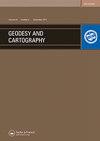Developing A Spatial Model Of Probable Hiking Experiences Through Natural Landscapes
IF 2.1
Q3 REMOTE SENSING
引用次数: 12
Abstract
The natural landscape is an arena for a wide array of recreational activities. Recent changes in hiking behaviour in wilderness settings have been attributed to changes in tourists' attitudes, personalities and life styles. Modern tourists are not only looking for quality but also a variety of leisure products and experiences and a style of product delivery compatible to their life style. Tourists patronise those areas that offer diversity of natural and cultural attractions and a variety of experiences in an easily legible, navigable and accessible geographic space. This paper investigates characteristics of terrain surfaces in order to develop a spatial model of hiking experiences around the Pinnacle walking track in the Grampians National Park. In situ measurements of feelings and experiences were determined via a questionnaire administered to a group of adolescent aged students hiking on a track. The paper shows the development of a set of predictors derived from surface features and surface cover that can be used to predict potential hiking experience. Factor analysis has been used to identify a smaller set of dimensions that explain most of the variance among input variables. Finally, a predictive spatial model of hiking landscapes has been developed from input maps over the entire geographic space. The developed spatial model of probable hiking experiences is suggested as an alternative strategy to ease mounting pressure around existing walking tracks.通过自然景观建立可能徒步旅行体验的空间模型
自然景观是各种娱乐活动的场所。最近在野外徒步旅行行为的变化归因于游客的态度、个性和生活方式的变化。现代游客追求的不仅仅是品质,还包括丰富的休闲产品和体验,以及与他们的生活方式相适应的产品交付方式。游客光顾那些在易于辨认、通航和无障碍的地理空间中提供多种自然和文化景点和各种体验的地区。本文研究了格兰屏国家公园尖峰步道周围的地形特征,以建立徒步旅行体验的空间模型。通过对一组在轨道上徒步旅行的青少年学生进行问卷调查,实地测量了他们的感受和经历。本文展示了一套基于地表特征和地表覆盖的预测因子的发展,可用于预测潜在的徒步旅行体验。因子分析已经被用来确定一个较小的维度集合,解释了输入变量之间的大部分差异。最后,基于整个地理空间的输入地图,建立了徒步旅行景观的预测空间模型。开发的可能徒步旅行体验的空间模型被建议作为缓解现有步行路径周围日益增加的压力的替代策略。
本文章由计算机程序翻译,如有差异,请以英文原文为准。
求助全文
约1分钟内获得全文
求助全文
来源期刊

Geodesy and Cartography
REMOTE SENSING-
CiteScore
1.50
自引率
0.00%
发文量
0
审稿时长
15 weeks
期刊介绍:
THE JOURNAL IS DESIGNED FOR PUBLISHING PAPERS CONCERNING THE FOLLOWING FIELDS OF RESEARCH: •study, establishment and improvement of the geodesy and mapping technologies, •establishing and improving the geodetic networks, •theoretical and practical principles of developing standards for geodetic measurements, •mathematical treatment of the geodetic and photogrammetric measurements, •controlling and application of the permanent GPS stations, •study and measurements of Earth’s figure and parameters of the gravity field, •study and development the geoid models,
 求助内容:
求助内容: 应助结果提醒方式:
应助结果提醒方式:


